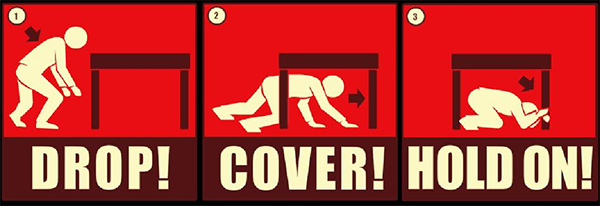Good Friday Earthquake
The 50th anniversary of the Good Friday Earthquake is March 27th
Mayor's "The Great Alaskan Earthquake" proclamation
Earthquakes can strike suddenly without warning at any time of the day or night and at any time of the year. Research shows that most injuries during an earthquake are a result of people being hit by falling objects and shattered glass, rather than from collapsed buildings. Injuries can be avoided if people take following appropriate steps:

- Drop, cover, and hold. Move only as far as necessary to reach a safe place. Most people injured in earthquakes move more than 5 feet during the shaking.
- If indoors, stay there until the shaking stops. Many fatalities occur when people run outside, only to be killed by falling debris from collapsing walls. It is safer to stay indoors until the shaking stops and it is safe to exit. When going outdoors, move quickly away from the building to prevent injury from falling debris.
- If outdoors, find a spot away from buildings, trees, streetlights and power lines, and overpasses. Drop to the ground and stay there until the shaking stops. Injuries can occur from falling trees, street lights and power lines, or building debris.
- If in a vehicle, pull over at a clear location free of hazards and stop. Stay in the vehicle with seatbelt fastened until the shaking stops. Turn on the radio to get information regarding the quake and any damage to roadways that may have occurred.
Register today for the Great Alaska Shakeout to commemorate the 50th anniversary of the 1964 Great Alaska Earthquake at http://shakeout.org/alaska/
For more information on earthquake safety contact the Office of Emergency Management at 343-1400.